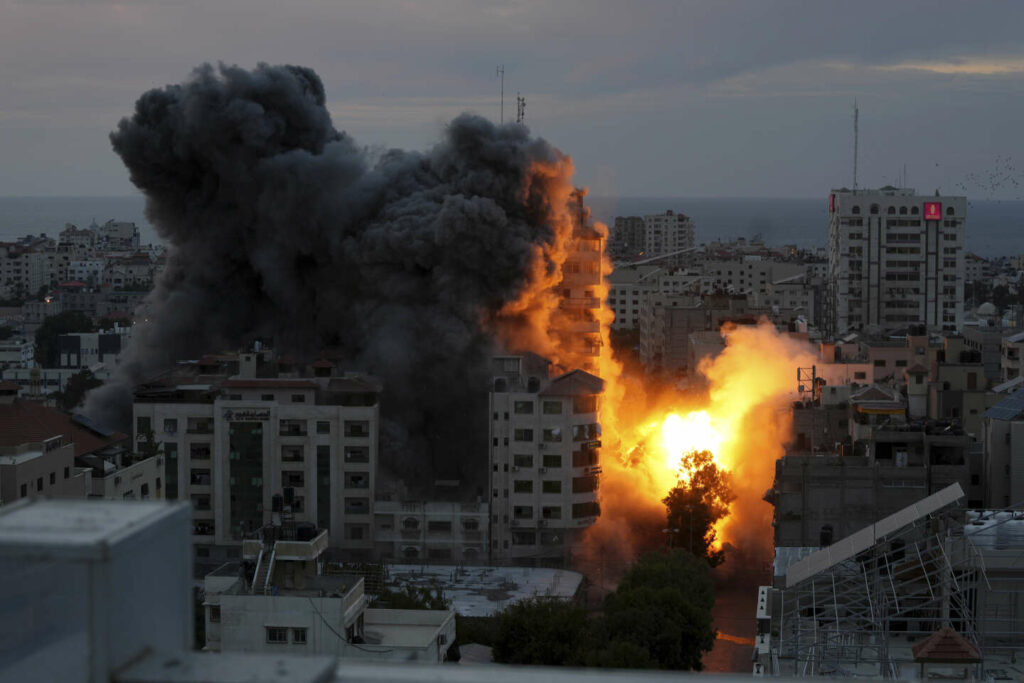Israel’s War Zones history has been marked by conflicts and wars that have had profound humanitarian implications, both within its borders and in the surrounding regions. In this article, we will take a closer look at the humanitarian challenges faced in Israel’s war zones and explore the role of technology and AI in addressing these critical issues.

The militant Hamas rulers of the Gaza Strip carried out an unprecedented, multi-front attack on Israel at daybreak Saturday, firing thousands of rockets as dozens of Hamas fighters infiltrated the heavily fortified border in several locations by air, land, and sea and catching the country off-guard on a major holiday. (AP Photo/Adel Hana)
Humanitarian Challenges in Israel’s War Zones
- Displacement and Refugees: Conflicts have led to significant population displacement, both internally and among neighboring nations. Palestinians and Israelis alike have experienced displacement, resulting in refugee crises.
- Access to Healthcare: War zones often suffer from limited access to healthcare, leading to medical emergencies and the strain on healthcare infrastructure. This includes issues like access to clean water, medicines, and medical facilities.
- Humanitarian Aid: The delivery of humanitarian aid to conflict-affected areas is often hindered by security concerns and political complications, making it difficult to provide essential assistance to those in need.
The Role of Technology and AI in Humanitarian Efforts
- Data Collection and Analysis: Technology and AI can be used to collect and analyze data related to humanitarian crises. This data helps organizations understand the scope and severity of the challenges they face.
- Geospatial Information: Geospatial technology and AI assist in mapping conflict-affected areas, which is crucial for planning the distribution of aid, tracking displacement, and assessing damage.
- Communication and Coordination: Technology enables more effective communication and coordination among humanitarian organizations, leading to better planning and delivery of aid.
Humanitarian Challenges in Specific Conflict Zones
- Gaza Strip: The humanitarian situation in Gaza is a matter of international concern. The population faces challenges related to food security, clean water, healthcare, and education due to the ongoing Israeli-Palestinian conflict.
- Syria: The conflict in Syria has led to one of the world’s largest humanitarian crises. Displaced Syrians struggle to access essential services, and the conflict has disrupted education and healthcare.
Technological Innovations for Humanitarian Aid
- Drones: Drones are used for delivering medical supplies and collecting data in hard-to-reach areas.
- Artificial Intelligence: AI is used to predict humanitarian crises and optimize the distribution of aid.
The Future of Humanitarian Efforts in Israel’s War Zones
The challenges in Israel’s war zones remain complex and multifaceted, but technology and AI have the potential to significantly improve the effectiveness of humanitarian efforts. With advancements in data analysis, communication, and coordination, humanitarian organizations are better equipped to address the critical needs of those affected by conflicts in the region.
Conclusion: Navigating a Complex Landscape
Humanitarian challenges in Israel’s war zones require a multifaceted approach that encompasses technology, data analysis, and international cooperation. As the region continues to grapple with conflicts and their humanitarian consequences, leveraging the potential of technology and AI becomes increasingly important in ensuring the well-being and safety of those affected by these challenges.